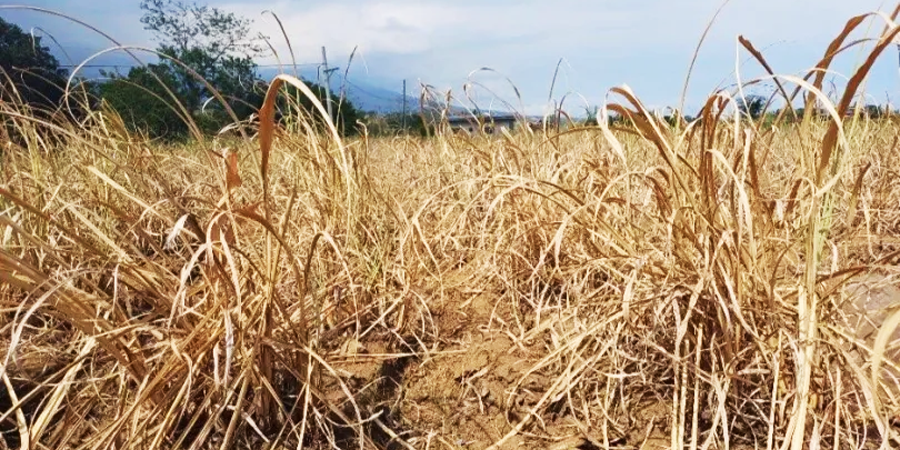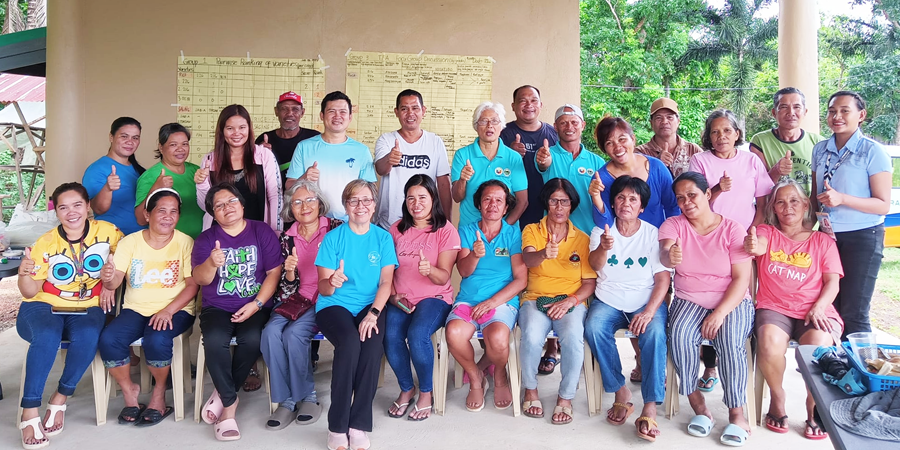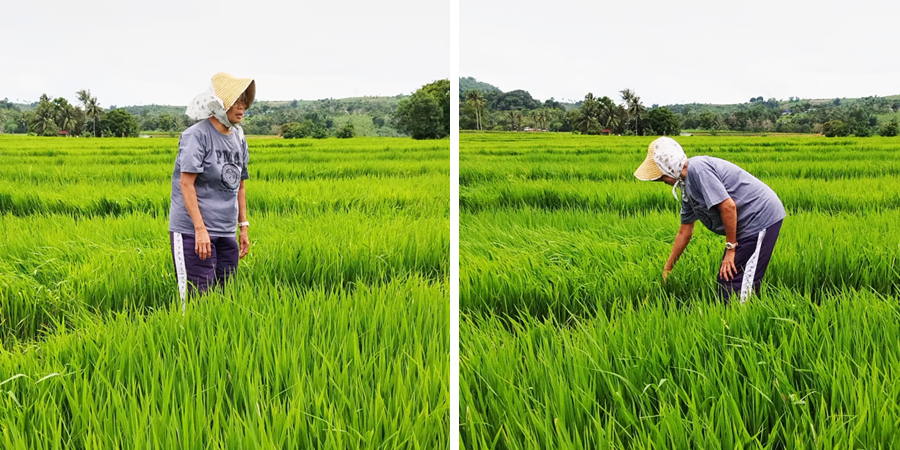• KEITH BRANDON CARI-AN
(First of 2 Parts)
The Philippines experienced both extremes in terms of weather in the past years, with the increased rainfall contrasting sharply with the scorching heat of the previous prolonged drought.
Negros Occidental is no different from its neighboring provinces and island in the Visayas.
The recent El Niño did not only bring high temperatures in the province even beyond 40 degrees Celsius. It also withered standing crops and prevented farmers from planting replacements for affected rice, corn, and high-value commercial crops.
Because of this, holistic solutions addressing financial, technical, and organizational concerns have sprung from both government and nongovernment entities to increase disaster-preparedness and recovery.
In this two-part report for Fair Finance Philippines (FFPH), the author dives deep into Negros Occidental’s response and mitigation efforts as it faced the extreme effects of climate change.
FFPH is a member of Fair Finance Asia, a regional network of Asian Civil Society Organizations (CSOs) committed to ensuring responsible banking and sustainable finance across Asia.
FFPH advocates for the effective adoption of environmental, social, and governance (ESG) criteria in the Philippine banking industry to mitigate the negative effects of irresponsible investments.
They work with civil society, regulators, and financial institutions to build capacity to implement ESG policies, enable CSOs to effectively advocate for sustainable finance, and develop impactful, evidence-based research and case studies for sustainable finance awareness-raising among consumers.
El Niño mitigation efforts
Before the prolonged drought, the provincial government of Negros Occidental set its El Niño Preparation and Mitigation Plan, spearheaded by the Office of the Provincial Agriculturist (OPA).
Through the plan, the El Niño Task Force was created in April 2023, which was the springboard for the Capitol to begin its information-education-communication campaign on various platforms, such as in-person reorientation to farmer grassroot groups, mounting information sessions on the municipal level, and even guesting on community radio stations.
The Task Force also conducted refresher trainings, purchased buffer stocks, and coordinated with partner agencies and LGUs.
According to an OPA report, one of the plan’s major components was the El Niño Preparedness and Mitigation Project, which was allotted a budget of P15,380,000.
The project consisted of procurement of water extraction tools, equipment, and accessories; establishment of three satellite nurseries and provision of planting materials; procurement of various vegetable seeds; food for work assistance extended to vulnerable communities; and capacity building on climate resilience and disaster preparedness.
Agricultural losses
In a consolidated report from OPA, from November 2023 to May 2024, the agricultural sector of Negros Occidental incurred damage amounting to P352, 283,667.26 across 7,263.83 hectares of rice, corn, and high-value commercial crops.

A total of 9,675 rice farmers from 244 barangays in all six districts of the province were affected by the drought. The damage reached 6,683.40 hectares of rice farms, and worth P319, 308, 576.95.
The City of Kabankalan declared P99,624,716.80 in rice crop damage on 2,355.11 hectares of farmlands. A total of 3,430 farmers from 20 barangays declared losses due to the drought.
Meanwhile, the Municipality of Cauayan was the second most affected, with P66,139,789 total damage to 561.47 hectares of rice fields. This was reported by 1,130 farmers from 20 barangays in the south Negros town.
A staggering P17,102,799.31 loss on 464.29 hectares of corn crops affected 697 farmers from 49 barangays.
Kabankalan City’s cornfields sustained the most losses. A total of 265 farmers from five barangays reported damage in 178.84 hectares of corn plantations.
High-value commercial crops also were not spared. Some 489 farmers from the town of Valladolid declared the most damage, spanning 77.80 hectares, and worth P7,921,850.
A total of 630 high-value commercial crop farmers in the province, who own 116.14 hectares of farmlands in 324 barangays declared losses, amounting to P15,872,291.
Moving forward from the drought
For Joventina Ong, vice president of the Tabukol Farmers Association, the latter part of the prolonged drought manifested several challenges for her fellow farmers in Bago City.
The 62-year-old farmer and agriculturist said her fellow members of the association declared losses as soon as possible to their LGU to access financial assistance, through the rice crop insurance offered by the Philippine Crop Insurance Corporation, a government-owned and controlled corporation (GOCC).

Ong is among the farmers tapped by the nongovernment organization Southeast Asia Regional Initiatives for Community Empowerment (SEARICE) for the “Engendering Access for Smallholder Farmers to Plant Genetic Resources for Food and Agriculture for Conservation and Sustainable Use” project.
The two-year SEARICE project works with farmers from the cities of Kabankalan and Bago for Negros Occidental. The project seeks to address the challenges that farmers face, especially in accessing seeds and planting materials to develop crop varieties that both meet their nutritional needs and suit best to local farming conditions.

Aside from technical assistance, capacity-building opportunities have also been extended to farmers. Himamaylan City farmer-leaders Alex Agenga of the Tara Agrarian Reform Cooperative and Jomar Bayog of the Southern Negros Agrarian Reform Cooperative are also making the most of the opportunity to further improve their leadership skills and capability to address organizational hurdles.
Both have been chosen to be among the 34 civil society organization leaders to comprise the pioneer batch of the USAID Leadership Cascade, a leadership immersion and training program designed to support civil society organizations through capacity development.
Armie Tuparan, a farmer from Barangay Carabalan in the same city, expressed her gratitude to their local government for exhausting all means to support the drought-affected farmers and their families.
Himamaylan City has allocated P23 million from its savings to put up infrastructure projects and extend livelihood projects.

Financial assistance, insurance
In June, President Ferdinand “Bongbong” Marcos Jr. personally visited Negros Occidental to turn over P50 million in Presidential Assistance to Farmers, Fisherfolk, and Farm Families (PAFF).
The initiative aimed to distribute P10,000 to each of the assessed 5,000 drought-affected farmers, fishers, and their families. The Department of Agriculture assessed the application of the recipients before the aid distribution.
As of end July, Negros Occidental is the first province in Western Visayas to have completely disbursed the fund to its intended recipients, OPA officer-in-charge Dina Genzola said.
Genzola added that the provincial government ensured that the rollout in the province was accomplished before the July 26 deadline.
In August 2023, Negros Occidental Governor Eugenio Jose “Bong” Lacson signed a memorandum of agreement with PCIC president, Atty. Jovy Bernabe, which insured 5,000 farmers of rice, corn, and high-value crops under the longstanding Negros First Universal Crop Insurance Program (NFUCIP).
During the agreement signing of the partnership, the provincial government also turned over a check for P5 million, representing its counterpart subsidy for the farmers’ premium requirement.
In August 2021, the province previously transferred a total of P19,239,880 funds to PCIC for the implementation of NFUCIP for crop year 2021 and onwards.
This foresighted program of the provincial government, which was launched in 2011, proved to be a valuable safety net for farmers, fishers, and animal raisers alike.
While the El Niño brought setbacks to the agricultural sector in Negros Occidental, it also catalyzed more initiatives and foresight to address the ill-effects of drought. The programs, infrastructure, and knowledge from the recent experience are already in place, all our local governments and farmers need is to keep the momentum to hopefully mitigate losses before the scorching heat returns to the Island of Negros and the Philippines. (to be continued)




